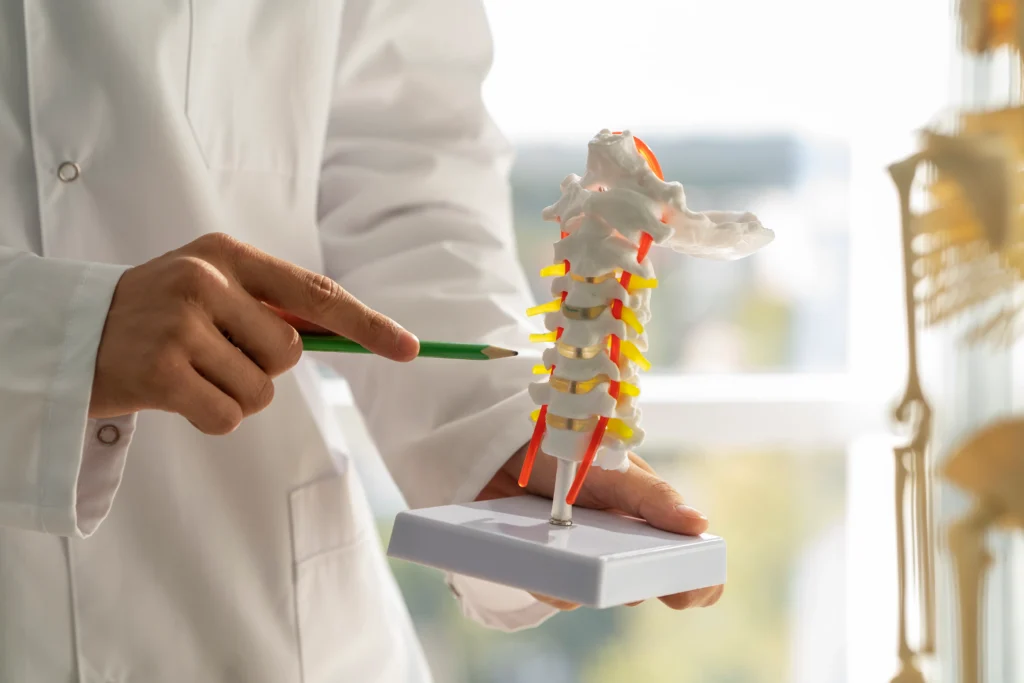Spinal Cord Treatment in Pune
Spinal Cord Treatment in Pune
Introduction
A wide spectrum of illnesses that impact the spine, an essential structure for mobility and stability, are referred to as spinal diseases. Vertebrae, intervertebral discs, nerves, muscles, and ligaments make up the spine. It permits flexibility and movement, offers structural support, and safeguards the spinal cord. Spinal disorders can cause pain, decreased movement, and a host of other symptoms that interfere with day-to-day functioning. Dr. Shirish Yande gives the best spinal cord treatment in Pune as per the patient’s condition. It is critical to comprehend these conditions, including their forms, treatments, and preventative actions, in order to preserve spinal health and enhance quality of life.

Types of Spinal Disorders
Degenerative Disc Disease (DDD)
Degenerative Disc Disease is a disorder in which the intervertebral discs, which serve as cushions between the vertebrae, gradually degrade. Symptoms include numbness, tingling, back or neck pain, and pain that radiates to the arms or legs. Therapy options include physical therapy, medication, dietary adjustments, and, in extreme situations, surgery.
Herniated Disc
A herniated disc compresses surrounding nerves when the inner, gel-like core of the disc seeps out via a tear in the outer layer.Symptoms include numbness, muscle weakness, radiating pain in the limbs, and sharp back or neck pain.Treatment options include physical therapy, medication, epidural injections, and even surgery.
Spinal Stenosis
The narrowing of the spinal canal, known as spinal stenosis, can compress the spinal cord and nerves.Symptoms include walking difficulties, back and limb pain, numbness, or paralysis, and in more severe cases, loss of control over one’s bowels or bladder. Treatment options include prescription drugs, physical therapy, dietary changes, and maybe surgery.
Scoliosis
Scoliosis is an irregular lateral curvature of the vertebrae. Symptoms include backache, uneven hips or shoulders, and, in more severe situations, breathing problems. Treatment options include bracing, surgery in extreme situations, and observation.
Spinal Tumors
Spinal tumors are abnormal growths, either benign or malignant, that develop within or around the spine. Symptoms include neurological impairments, back pain, and in extreme situations, paralysis. Treatment options include chemotherapy, radiation therapy, surgery, and targeted therapy.
Spinal Infections
Osteomyelitis and discitis are examples of spinal infections that impact the vertebrae, intervertebral discs, or spinal canal. Symptoms include chills, fever, severe back pain, and neurological issues. Treatment options include antifungal or antibiotic drugs, as well as occasionally surgery.
Treatment Options
* Nonsurgical treatments
Pain painkillers, anti-inflammatory medicines, muscle relaxants, and other treatments are used to treat symptoms.Physical therapy consists of exercises and therapies designed to increase flexibility, strength, and posture.Lifestyle changes such as weight control, ergonomic improvements, and activity moderation can help to alleviate spinal strain.
Injections: Epidural steroids and nerve blocks are used to alleviate inflammation and pain.
* Surgical Treatments
Discectomy: The removal of a herniated disc segment to relieve nerve pressure.Laminectomy is the removal of a portion of the vertebra to expand the spinal canal and relieve pressure.Spinal fusion is the joining of two or more vertebrae to give structural stability.Vertebroplasty/Kyphoplasty are minimally invasive procedures for stabilizing compression fractures in osteoporosis.
Prevention
- Exercise Regularly
- Maintain a Healthy Weight
- Ergonomic Adjustments
- Proper Lifting Techniques
- Regular Check-Ups

